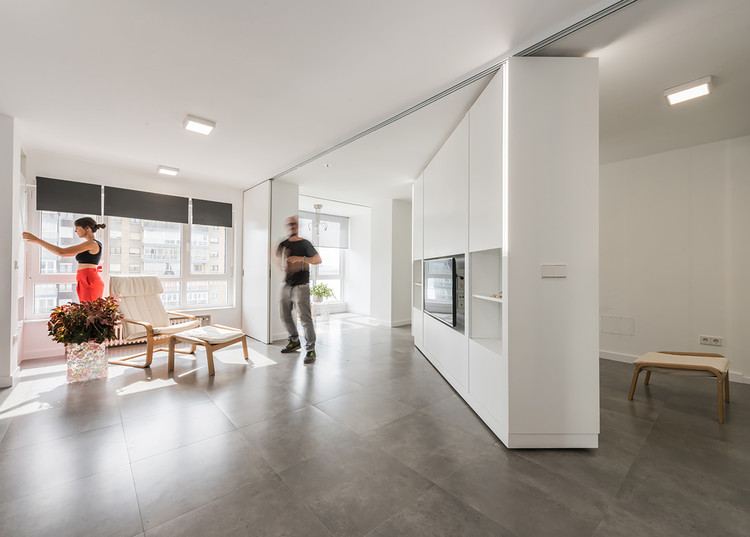
Although artificial intelligence is showing the potential to carry out successive iterations with good results, designing the layout of spaces takes up large portions of a designer's time. The organization of elements present within a space determines the flow of movement, the points of view and will largely dictate how it will be used. But the idea of stifling the use of the environment may not work for all cases. Due to space restrictions or supplementary uses that a room can have, some architects have developed dynamic layouts that have more than one possible use. Whether through dividing elements or special modules, these projects allow the space to change radically through movement.

São Paulo architect Isay Weinfeld, in the project for Livraria da Vila, designs a monolithic volume that seems to rest on thin bookcases. The four partitions pivot and open the shelves perpendicular to the street. At Garoa's Wish21 School, the open space of the pre-existing shed includes mobile panels and folding furniture that allow maximum flexibility of space for the most varied possible educational activities. In the words of the architects: “We approach the floor plans as a territory composed of contraction and expansion zones, where borders and limits exist, but they are tenuous, allowing and encouraging transgression, catalyzing imaginative appropriation, understanding children as active subjects. ”

In another unit of the same school, Garoa developed an even more radical layout. Through furniture structured in metallic profiles, which pivot at a central point, they allow for an infinity of combinations of spaces. From small segregated rooms, it is possible to create a large integrated space by rotating the elements. This will influence and be dictated by what students will be doing on any given day. According to the firm, “Consequently, to go from one point to another, it is possible to choose different paths, different interactions, choose what to find and what not.”

Using a similar solution, the project for Porto Educação, by numa arquitetos, also makes use of shelves to shape dynamic spaces. “The project is proposed as a large square that can be transformed into three independent rooms through the manipulation of articulated partitions. When open, they allow for the flow of circulation - reinforced by the continuity of the monolithic floor of light blue color -, expanding the field of learning to the square, corridors and pantry.”


At JC Architecture's Taipei Fine Arts Museum Store, the cantilevered shelving movable structure provides spatial flexibility allowing visitors to see the ordinary gift shop in a new way. Two sets of five double shelves rotate on an axis on the side of the space, forming dynamic exhibition spaces, but also bleachers and benches when necessary.

In residential spaces it is also possible to find daring solutions for the organization of spaces. Dealing with a limited floor plan, but with multiple intended uses, PKMN Architectures created mobile units for an apartment in Madrid. “Bespoke wooden units, conceived as "suspended, mobile and transformable containers" allow for the easy reconfiguration of a small space and meet the diverse needs of the customer. The compartments, with a total storage volume of 11.27 cubic meters, serve as shelves and storage for shoes, household items, cleaning supplies, clothes, kitchen counter and bed. Each unit weighs between 500 and 800 kg when fully filled, but thanks to the use of simple industrial rails it can be easily moved with one hand. When all units are pushed aside, the kitchen, studio and bedroom are compressed, a 14.8-square-meter dressing room and yoga studio open up between the closet and the bathroom's glass doors. The size of each space can be easily adjusted according to the client's wishes, with a sliding screen to provide privacy when needed. A fixed room of 23.2 square meters makes up about half of the house, opposite the service spaces.”


From the same architects, the MJE House project (Little Big Houses #2) works with rotated elements to create sleeping spaces when necessary for a couple's residence. “Through a swivel unit, the two rooms of the house can be in and out in a minute. The house has three positions and a house with two bedrooms, one bedroom or none.”

Reconfigurable floor plans provide space savings, creating multiple possibilities in a limited space. As we continue to spend more and more time indoors, it is interesting that spaces can keep up with our demands over time.












